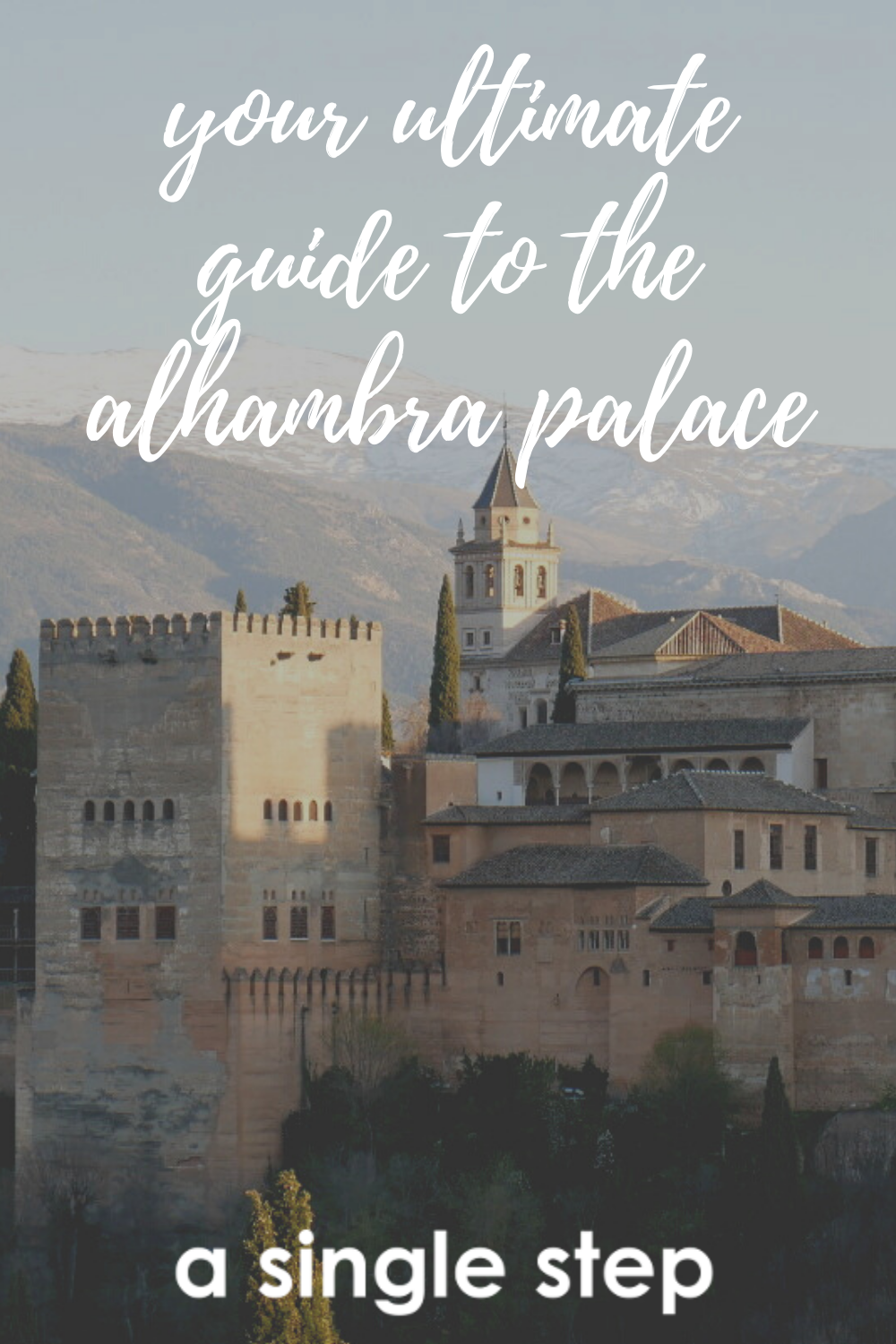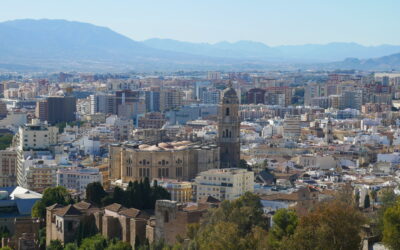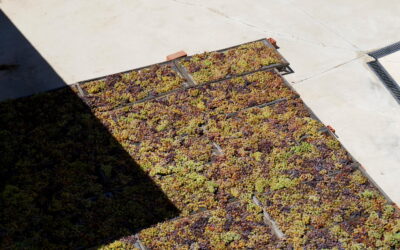Undeniably one of Spain’s greatest sites, the Alhambra in Granada is a true Moorish architectural treasure. Designated a UNESCO World Heritage Site in 1984, the Alhambra Palace was considered to be one of the new seven wonders of the world, alongside such magnificent structures as the Taj Mahal, Machu Picchu, and the Great Wall of China.
Your ultimate guide to the Alhambra Palace
History of the Alhambra Palace
Original construction on the site of the Alhambra palace is thought to date back to as early as the 8th Century, however the palace as we now know it originated around the 14th Century. It’s strategic location on a hard-to-access hill, protected by the Sierra Nevada mountains and surrounded by a forest, are just some of the reasons that make the site ideal for an ancient fortress. Commissioned by the founder of the Nasrid dynasty Mohammed ben Al-Ahmar in the 13th Century, the Alhambra palace was further developed into a royal palace during the reign of the seventh ruler, Yusuf I, and his son Mohammed V. During their reigns, the majority of the palace that we can still admire today was built, including the Patio of the Lions, the Baths, and the Hall of the Boat.
In the following centuries, the palace underwent several additions and transformations, not least in the years after the fall of the city to Christian rule at the end of the 15th Century. Some 300 years after Seville and Córdoba fell, the final sultan of the Nasrid dynasty, Muhammad XII, surrendered the city to King Ferdinand II of Aragon and Queen Isabella I of Castile. Charles V, who ruled Spain from 1516, built a renaissance palace in his own name within the Alhambra, destroying a part of the existing structure, as well as constructing several other buildings.
The Alhambra, however, was abandoned in the 18th Century. Throughout the 19th Century, further parts of the palace were subsequently destroyed, firstly by the French Empire and then by an earthquake in 1821. After this, the process of restoring the Alhambra began, preserving the iconic site that we can enjoy today.
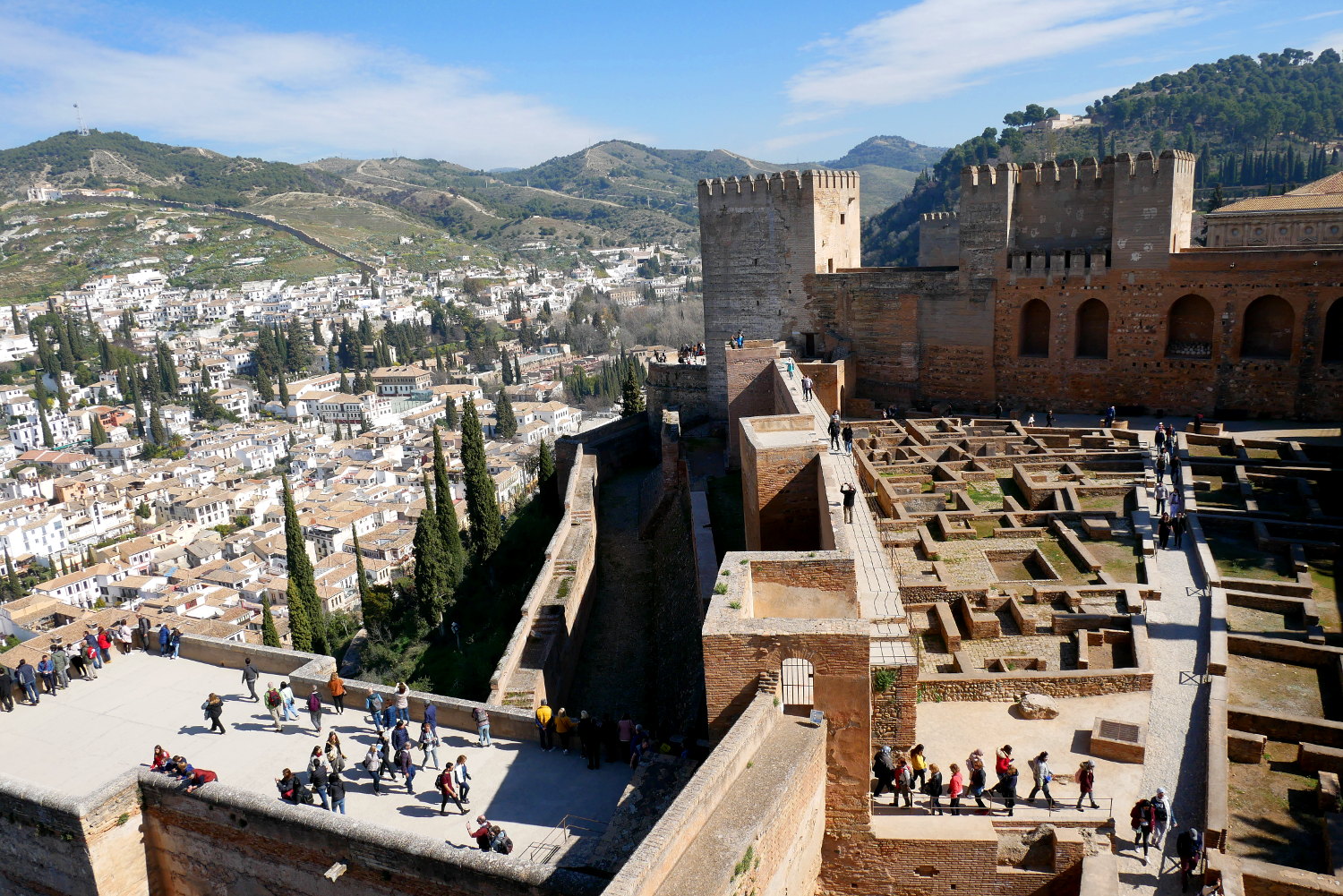
How to book the Alhambra Palace
It can be hard to find the best way to buy a ticket to visit the Alhambra, with a number of online travel agents and ticketing sites trying to sell an unforgettable trip to Granada’s most popular attraction, as well as several different ticket types available to buy. As always, however, it’s best to hit one of the following the official channels.
1. Alhambra Tickets
The official website to purchase tickets to the Alhambra is www.alhambra-patronato.es. Here you will find several types of tickets, including:
-
- Alhambra General | €14.00
- Gardens, Generalife and Alcazaba | €7.00
- Night Visit to Nasrid Palaces | €8.00
- Night Visit to Gardens and Generalife | €5.00
- Combined Visit to the Alhambra and the Rodríguez-Acosta Foundation | €17.00
In order to visit all aspects of the Alhambra, you will have to purchase either the Alhambra General or the Combined Visit which includes the Alhambra and the Rodríguez-Acosta Foundation, a studio building and gardens devised by famous painter José María Rodríguez-Acosta.
It’s worth booking your ticket as early as possible, as the Alhambra General tickets tend to sell out months in advance. If none are available, you can certainly try purchasing other types, or, alternatively, you can call the friendly bilingual booking staff on +34958027971, who can advise you on the best option. You will need a valid form of ID to book, as well as when visiting the site.
It is necessary to book a timed visit to Nasrid Palaces, whilst the rest of the Alhambra can be enjoyed at your leisure. This timing must be strictly adhered to, so make sure you arrive with plenty of time to spare.
2. Dobla de Oro
Another option that generally has more availability on www.alhambra-patronato.es is the Dobla de Oro. Costing €19.65, the Dobla de Oro tickets include full access to not only the Alhambra Palace, but also to a number of other attractions in Granada including:
-
- Corral del Cárbon
- Bañuelo
- Dar al-Horra Palace
- Moorish House
- Chapiz House
- Zafra House
This ticket connects a number of historic landmarks between the Alhambra and the Albaicín in a cultural itinerary that can be enjoyed throughout the course of a day.
3. Granada Card
The third option for visiting the Alhambra is to purchase the Granada tourist card. Costing €40.00, the Granada card includes full access to the Alcazaba, Nasrid Palaces and Generalife in the Alhambra (timing must be booked in advance), as well as a number of other historical attractions within the city:
-
- Granada Cathedral
- Royal Chapel
- Cartuja Monastery
- San Jerónimo Monastery
- Science Park Museum
- Zafra’s House
- Cuarto Real
- Sacromonte Abbey
- Casa de los Tiros Museum

How to get to the Alhambra Palace
Granada is fairly accessible from much of Southern Spain, just 90 minutes from Málaga, 2 hours and 20 minutes from Seville, or 2 hours and 45 minutes from Murcia. Although Granada does have a small airport named after the city’s famous poet and playwright Federico García Lorca, you’re more likely to arrive in Málaga’s much bigger airport.
Once in Granada, it’s easy to spot the Alhambra from much of the city, given it’s high vantage point, though it’s not always easy to get to. The most obvious route is to take the Cuesta de Gomérez from the bustling Plaza Nueva, which is around 1km walk by foot. You can also cross the historic Puente del Aljibillo at the end of the Carerra del Darro and walk along the Cuesta del Rey Chico. It’s also possible to get to the Alhambra by bus.
If accessing the Alhambra by car, there is plenty of paid parking available to the South-West of the site along the Paseo de la Sabica. We took the winding and scenic route along Avenue Santa María de la Alhambra, and ,if you have time, stop at the Mirador del Barranco del Abogado along the way for spectacular views across the city.
Things to do in the Alhambra Palace
The Alhambra Palace is split into several main sections, most notably the Nasrid Palaces, the Alcazaba, and Generalife.
Palacio Nazaríes (Nasrid Palaces)
The Nasrid Palaces are perhaps the most important and opulent of the Alhambra. Constructed between the reigns of Muhammad I in 1232 and Ismail I in 1314, this palace is a stunning example of Islamic architecture, featuring intricately carved walls and rooves, beautifully designed courtyards, and delicate monuments.
The Nasrid Palaces were originally split out into three main parts: the administrative Mexuar; the official residence, the Palace of Comares; and the emir’s private quarters, the Court of the Lions. Notable spots inside the Nasrid Palaces include the incredible symmetry of the Patio of the Myrtles, and the Patio of the Lions, a fountain structure of 12 lions in the centre of the courtyard of the Palace of the Lions.
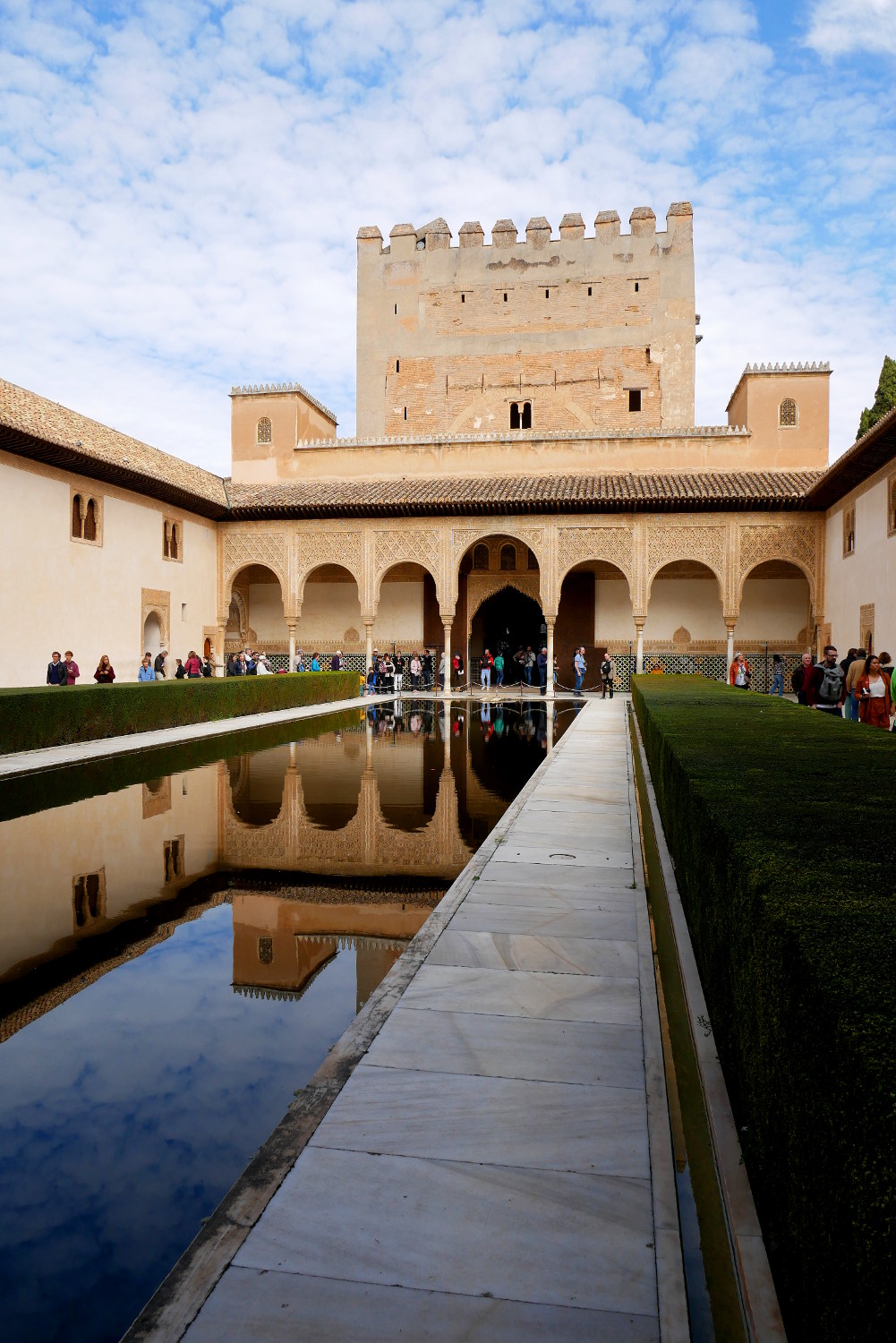

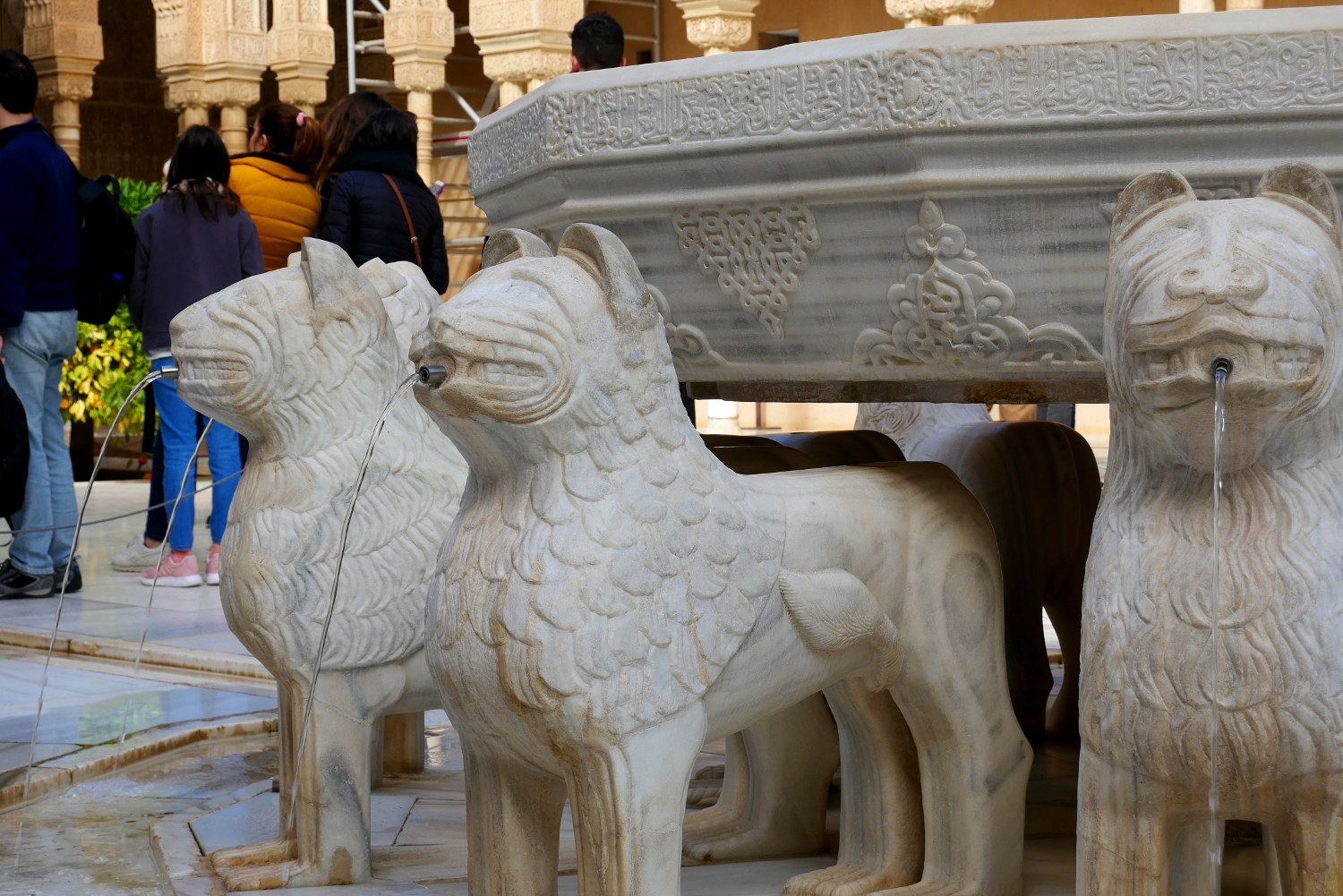
Alcazaba
To the West of the site lies the fortified Alcazaba, the oldest remaining site of the Alhambra. Utilised mainly for military purposes the Alcazaba dates back to at least the 9th Century, however the site was further fortified under Muhammed I, with the construction of ramparts around the original castle, and three towers: the Keep, the Broken Tower, and the Watch Tower.
It was in the fortified Alcazaba that the first rulers of the Nasrid dynasty took residence, before the construction of the Palcios Nazaríes.
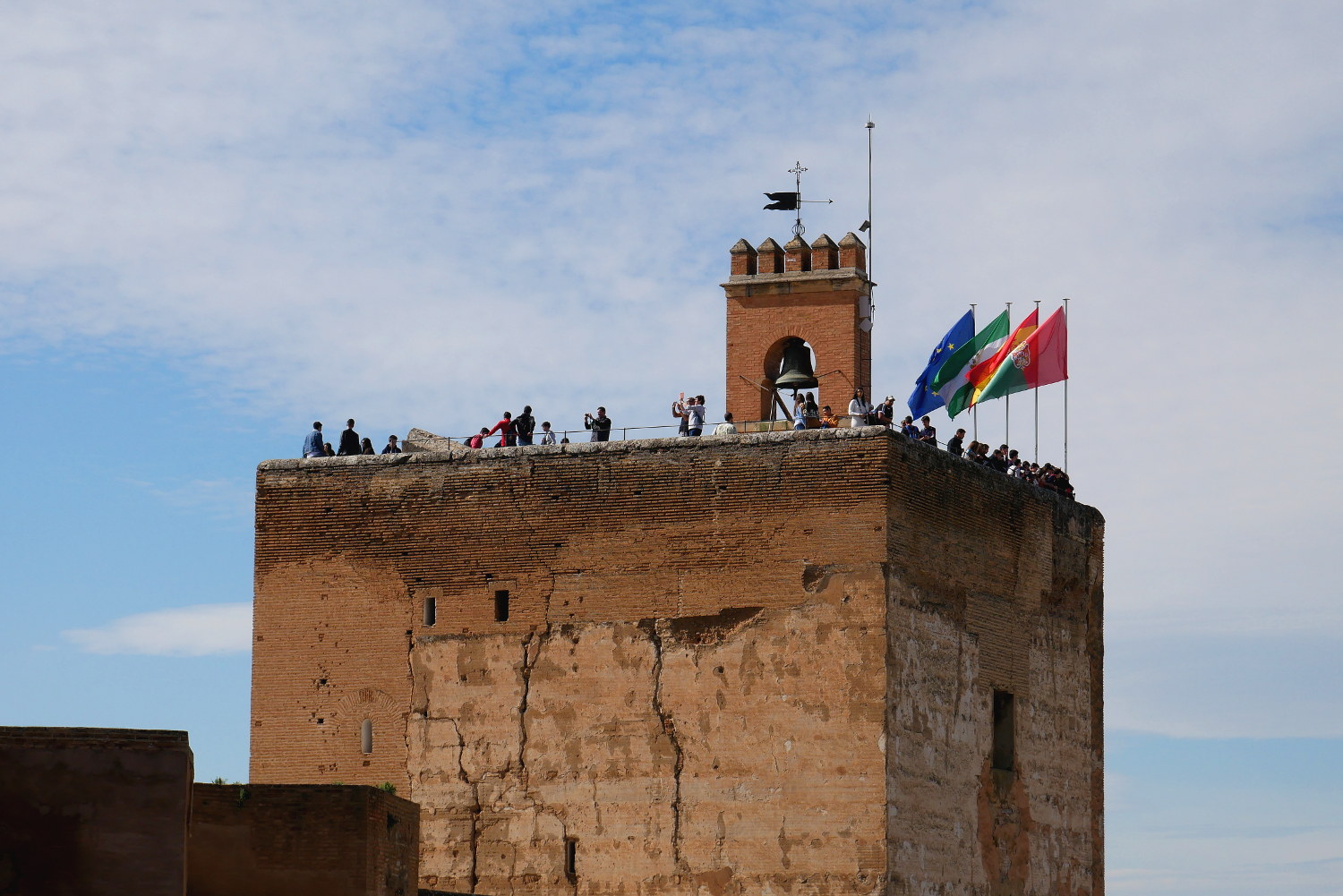
Generalife
As far from the rugged, military-style Alcazaba as possible in terms of construction, Generalife is the summer-house and elaborate gardens built for the rulers and families that resided in the Alhambra. The leisure palace was built in a simpler style than that of the official Nasrid Palace, indicating a place where rulers wanted to relax and escape the official business of the Alhambra.
Surrounded by sumptuous gardens, Generalife truly is a place to relax and admire the incredible Moorish architecture.

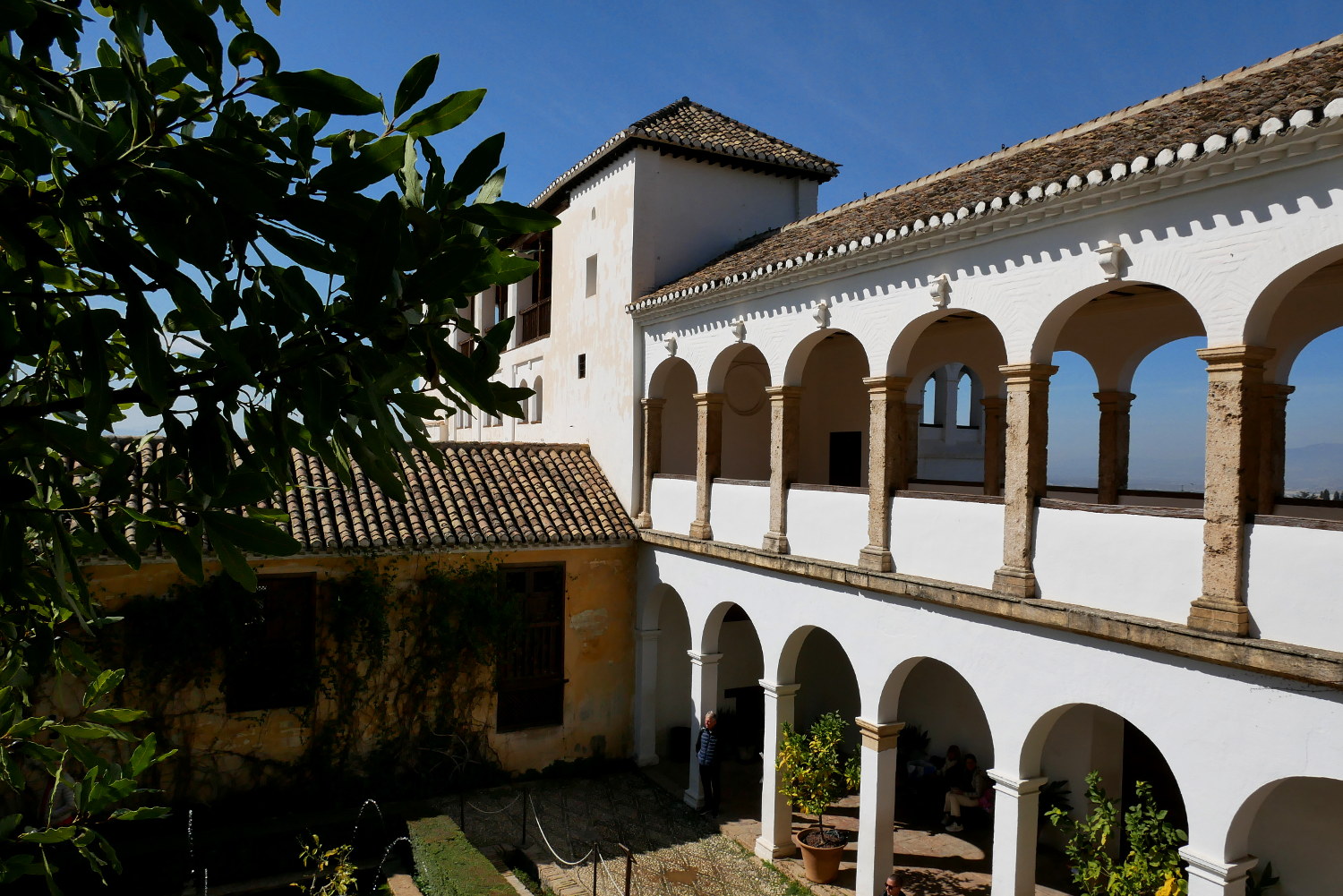
Alongside these three main sections of the Alhambra Palace, you can also visit a number of other sites within the complex. These include Palacio de Charles V, the renaissance-style complex built after the fall of the city to Christian rule; the Alhambra Museum, a celebration of Spanish and Moorish art and culture; and Baño de la Mezquita, the baths of the royal mosque.
Best picture spot of the Alhambra Palace
To get that iconic photo of the Alhambra, there’s no better spot than the Mirador de San Nicholas. Located to the North of the palace, the viewpoint frames the Moorish masterpiece in front of the brooding Sierra Nevada mountains. Head here just before sunset to catch the palace in the golden hour for the perfect picture.
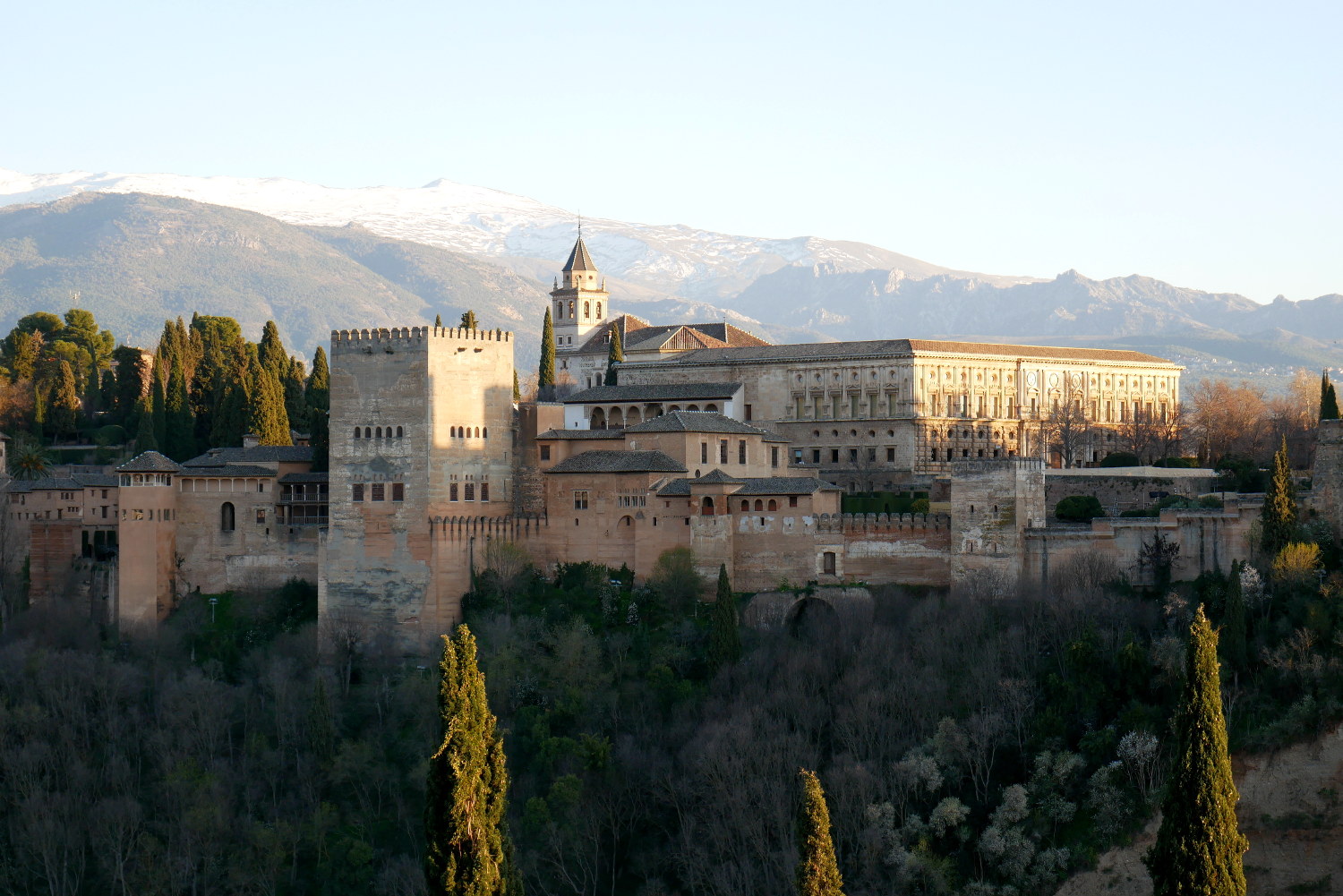
Alhambra Palace Hotel
If you’re looking for the closest Alhambra Palace Hotel, look no further than the magnificent Parador de Granada. The state-owned chain of Parador hotels are usually located in historical buildings around the country, and the Parador de Granada is no different, occupying a 15th Century convent in the grounds of the incredible Alhambra Palace. However, there are a lot of other options for apartments and hotels in Granada to enjoy on your visit.
The Alhambra Palace truly is one of Europe’s most iconic sites; a love-letter to Moorish culture and influence. Whether you’ve visited the Alhambra before or you’re planning your first trip, I hope this blog can help you to understand more of this architectural treasure.


